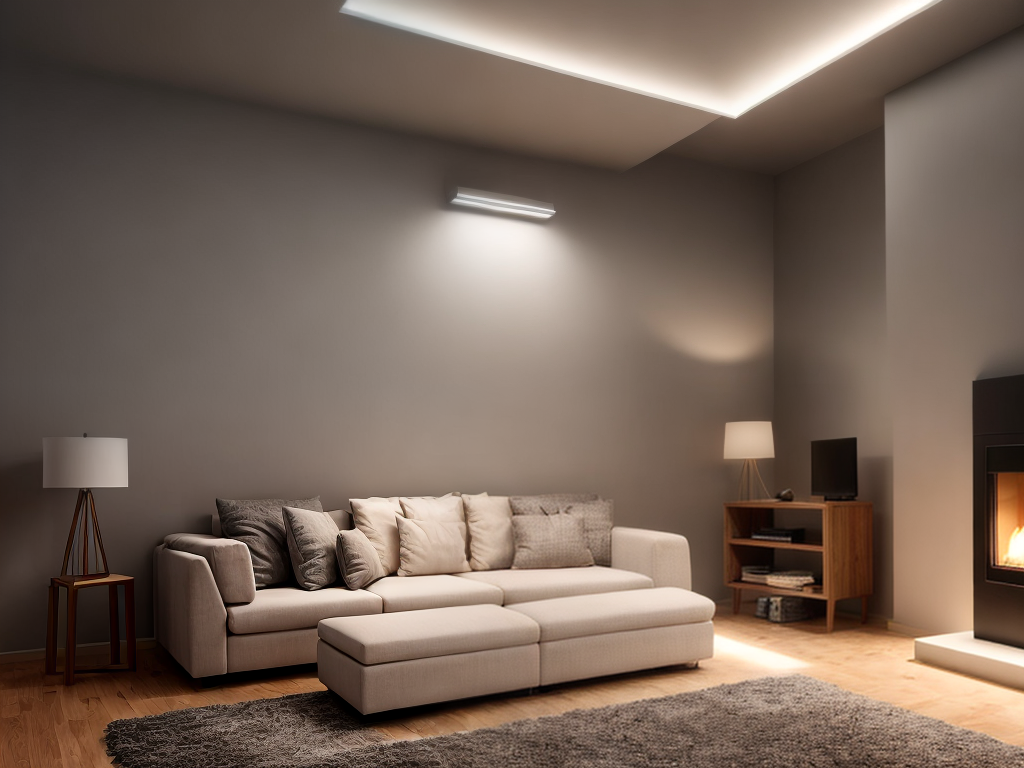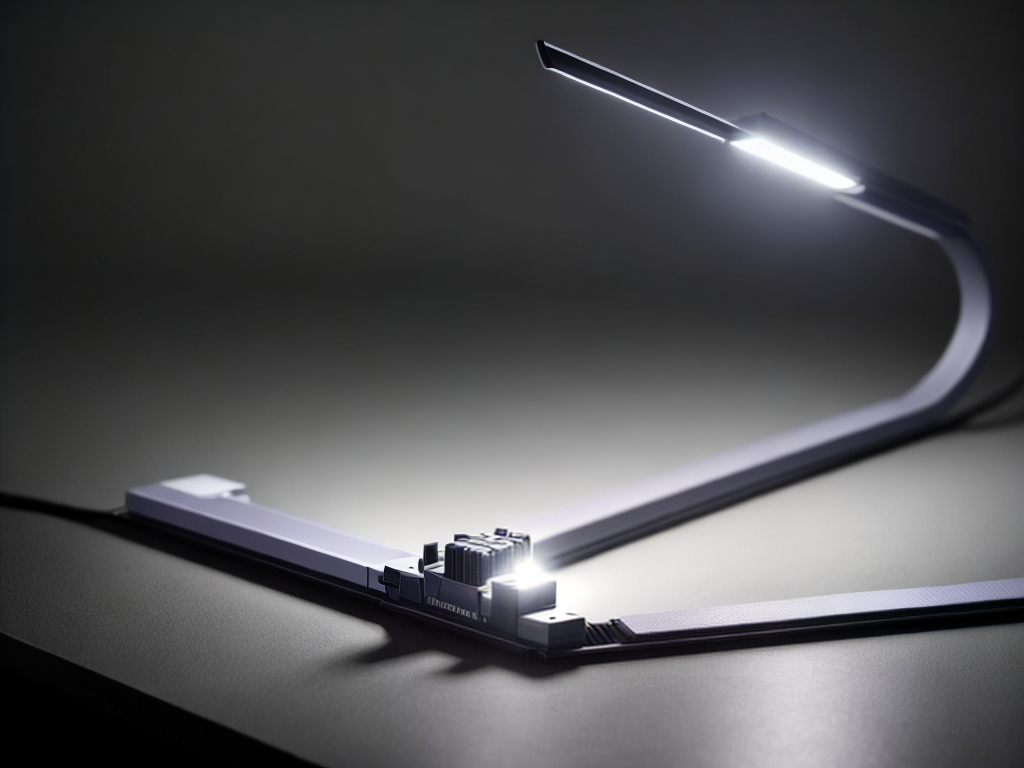Light is a fundamental energy that shapes our living environments. This article will examine how thoughtful lighting design can create serene, enlightened spaces within our homes.
We will explore the science behind light and its impacts, detail techniques for crafting spiritual ambiances, discuss lighting strategies for wellness and provide guidance on energy efficiency. Practical examples and insights will show how to transform chaotic, dark rooms into peaceful oases filled with healthy, vibrant light.
Understanding Light as an Energy That Shapes Our Spaces
Light is a powerful energetic force that profoundly influences environments. The unique properties and behaviors of different light spectrums have measurable effects on mood, wellbeing, circadian rhythms, and even spiritual resonance within a space.
By leveraging principles of physics and optics, we can strategically craft light to elevate spaces from mundane to sublime. Careful calibration of luminance, color temperature, diffusion, and layering of light sources allows us to shape the ambiance to precisely align with our intentions.
For example, bathing a living room with 2500-3500K warm white light from diffused table lamps creates a much different environment than casting6000K daylight white track lighting. The former fosters relaxation and community, while the latter enables tasks and productivity. By considering lighting dynamics, we gain immense control over the experiential qualities of our spaces.
Defining Key Qualities of Light That Impact Environments
Several key qualities determine how different types of light interact within a space:
Intensity: Measured in lumens, light intensity describes a light source’s brightness and illuminating power. High lumen output is well-suited to kitchens, while low-lumen ambiance lighting sets the mood in bedrooms.
Color Temperature: Described in degrees Kelvin, color temperature indicates cool or warm hues. Warm 2500-3500K light complements wood tones, while cool 5000K+ daylight suits sterile environments.
Diffusion: The spread and blending of light across a space. Direct light beams versus indirect glow creates dramatically different effects.
Layering: Utilizing several coordinated light sources to allow flexible combinations and scenes. This enhances ambiance control.
By calibrating these dynamics, we can program spaces to elevate relaxation, cognition, health, or productivity per our needs. The context of each room informs ideal lighting configurations.
For example, a teenager’s bedroom may benefit from tunable white LED strips capable of shifting from warm afternoon sunlight to cool midnight moonlight. This aligns with circadian biology. Getting lighting fundamentals right is foundationally important.
Evaluating Light Needs for Different Rooms and Purposes
Lighting requirements vary based on the functional and aesthetic priorities of distinct room typologies. We must evaluate how each space will be inhabited and align technical specifications appropriately.
Living Rooms: Require warm, inviting light at multiple intensity levels for flexible use. Wall sconces, floor lamps, and dimmer switches calibrate the ambiance for relaxation or conversation.
Kitchens: Demand bright, functional light for food preparation safety. Neutral white LED undercabinet strips supplemented by recessed cans maintain visibility.
Bathrooms: Benefit from layers of diffuse yet ample lighting for tasks like grooming. Waterproof LED strips, sconces, and can lights enable safe use.
Bedrooms: Need customized scenes optimizing sleep, reading, and relaxation states. Tunable white nightstand and accent lamps with dimming support healthy circadian rhythms.
Thoughtfully hyper-personalizing lighting to each space based on human-centric needs, forms the foundation for enlightened, functional environments. Adaptable solutions outperform one-size-fits all approaches.
Harnessing Natural Light Through Windows and Skylights
Sunlight remains the original source of healthy, vibrant light. Harnessing natural light flows through strategic orientation and clever feature placement represents a sustainable lighting design strategy.
Proper window and skylight positioning captures diffuse northern daylight while managing intense direct southern sun. External shading solutions like overhangs, louvers, and pergolas prevent overload and glare. These passively maximize natural light access through the seasons.
Complementing artificial lighting with sunlight maintains our biological connection to natural rhythms keyed to the solar cycle. Daylight color temperature and intensity also provide superior color rendering that manmade sources cannot match.
Situating living/working areas next to generous fenestration ensures we benefit from the nourishment of natural light through daylight hours. Bottom line: daylight should form the core foundation of quality illumination.
For those looking to undertake a DIY project to enhance natural light in their homes, National Tool Hire Shops offer a wide range of tools and equipment that can help you effectively position windows and skylights for optimal illumination.
Supplementing With Electric Lighting for Functionality
High performance artificial lighting neatly complements natural light access. Electric sources calibrate experiences for precise needs unmet by daylight alone – at night when solar light fades.
Strategically layering fixtures for ambient, accent, and task illumination grants fine control over light placement, color, intensity, and diffusion. For example, dining rooms employ central pendants for general light, while recessed spotlights highlight artwork on the perimeter.
Additionally, fixtures should consolidate advanced features:
Tunable White: Shifts LED color temperature to align with circadian needs
Dimming & Scene Control: Allows programming for flexibility
Automation & Sensing: Motion/daylight sensors manage lighting without behavior change
By harmonizing layers of natural daylight and customizable electric light sources into intelligent systems, we satisfyingly illuminate our spaces for optimal function.
This also future proofs environments. When upgraded or redesigned down the road, robust lighting infrastructure easily adapts—protecting initial investment, as latent needs shift.
Designing Layered Lighting for Flexibility and Ambiance
Beyond meeting baseline visibility needs, lighting equally impacts ambiance – our perceptual interpretation and experience of a space. Lighting layers tailored to human dynamics cultivate specific moods and states of being using surround luminance.
Wall washing perimeter spaces in neutral, higher temperature white light maintains cheer and alertness. While concentrating warmer, lower-intensity light sources in seating areas fosters communal relaxation.
Compositionally transitioning between spotlighting, flood lights, globes, and accent lights fluidly guides attention across a room, upholding visual interest. Similarly, adding color-tuning abilities enables shifting scenes from vivid mornings to cool midnights.
This ambient luminosity influences our states of being. Uplifting and calm atmospheres manifest through combinations of intensity, color, and contrast. Just as light shapes space, space shapes light. The two hold symbiotic potential.
Establishing Calm Through Diffused, Indirect Light
The diffusion and directionality of light proves foundational for peaceful environment building. Excessively intense overhead lighting causes harsh shadows and eye strain that trigger neurological stress responses. This disturbs relaxation.
Instead, bouncing light off matte finishes and aiming it upward using table and floor lamps fills spaces with a warm, enveloping luminance. Softly illuminated walls emit a delicate radiance at human-centric sight lines without glare. This sets a deeply reassuring mood.
Textured lampshades and sanded glass light covers blend scatter light particles for gentle uniformity. Ambient ceiling cove lighting achieves similar diffusion. This quells chaos and evenly blankets spaces in tranquility. By crafting a wraparound indirect glow, we anchor rooms in stillness.
Elevating Relaxation With Dimmers and Smart Switches
Precision dimming technology grants real-time modulation over lighting intensity, speedily calibrating ambiance to match dynamic needs. Manual tactile dimmers, as well as app/voice-controlled smart lighting systems allow custom-tailoring luminosity.
Gradually diminishing light levels signals the body to produce melatonin, preparing for sleep. This effectively transitions evenings into deeper phases of relaxation. Additionally, tuning brightness to perceptual comfort fosters inviting spaces for guests.
Beyond manual inputs, contemporary smart home platforms automate intensity levels using timers, schedules, and sensors to automatically adapt lighting states for circadian alignment and visual comfort as conditions shift.
This effortlessly maintains ideal peaceful environments without relying on behavioral discipline or memorizing complex lighting procedures. Intuitive and automated lighting invites relaxation.
Balancing Natural & Artificial Light in Healthy Rhythms
While artificial light affords excellent customizability and delivers targeted light, it remains an electrical simulation of the solar and lunar cycles that human biology intrinsically understands. We subsist in a delicate balance with natural light.
Design strategies that thoughtfully blend natural sunlight, moonlight, starlight with facsimiles using intelligent eco-system centered automation and architectural orientation outperform approaches leaning entirely on either source.
Home infrastructure with significant fenestration across daylight hours supplemented by hue shifting and intensity tuning after sunset closely emulates ancestral patterns our physiology still expects. This catalyzes health. Light shapes life.
Observing solar cycles by exposing environments to ample daylight followed by dim, warmer hued nightlighting supports robust circadian biology critical for hormonal functioning, sleep, digestion and even emotional regulation in occupants. Natural patterns endure as supreme.
Configuring Lighting to Support Healthy Sleep
Beyond generally aligning with bio-cycles, targeted lighting configurations actively improve sleep by creating conducive evening lighting that triggers winding down states and melatonin hormone production.
Dynamically decreasing color temperatures at night using tunable white bulbs better mimics sunset. Lower intensity ambient and accent lighting prevents blue wavelength stimulation that disrupts sleep. Smart automation enacts these scenes precisely at optimal times without reliance on discipline.
Additionally, embedding lighting into headboards and bedroom coves fills these spaces with a dim extra-warm glow supporting the sleep phase. This lighting habitat outperforms complete darkness. Deep rest lives here.
Minimizing Harmful Light Elements
Certain properties of artificial light can negatively interface with human biology if sustained exposure occurs.
Flicker: Ultra-rapid cycling of light intensity strains visual processing in the brain, depleting cognitive resources.
UV & Blue Light: High-energy wavelengths damage skin and suppress melatonin secretion critical for sleep.
By selecting flicker-free LED fixtures compliant with IEEE 1789 standards and using amber/red hued lighting after sunset, we meaningfully improve habitat quality by preventing unnecessary biological stress through lighting design.
Bathing Rooms in Uplifting Hues
Beyond physical health support, lighting also impacts emotional states through the penetrating influence of color. Chromatic environments stained by multi-hued luminance take on psychospiritual qualities.
Bathing living rooms in verdant nature greens and sky blues lifts mood and invokes communion with the outdoors. Warm tangerine backlighting kitchen spaces rouse conviviality and creativity. Radiant goldenrod accent walls imbue dining rooms with festive positivity for lively connection.
The sciences of light, color, and perception support deliberately engineering lighting to manifest target atmospheres that uplift, inspire, or soothe occupants. We stand as luminous beings in chromatic worlds of our own making.
Prioritizing Energy Efficient LED Lighting
As lighting equipment operates for thousands of hours over decades, product energy demands significantly impact environmental and economic bottom lines. By procuring high quality LED hardware over antiquated technologies, substantial gains occur.
Efficiency: LEDs convert over 90% of energy to light vs 10% for incandescents. This reduces lighting loads by 80%+.
Longevity: LEDs last 50,000+ hours, avoiding frequent bulb waste.
Quality: LED color accuracy, intensity, and diffusion outperform older light sources.
Controls: Advanced LEDs tune color, dimming, timing, automation natively.
Efficient LEDs mitigate energy waste and unnecessary costs while maintaining superb lighting experiences. This fulfills eco-design ethics and financial incentives simultaneously.
Employing Automated Lighting Controls
Automating system behavior to align with external dynamics and user needs, absent direct physical manipulation, represents an apex of quality lighting implementation. Technology handles operational optimization while users focus on inhabitation.
Networked LED hardware communicating with centralized hubs, programmed by intuitive apps creates delightfully functional, adaptive environments. Occupancy and daylight sensors, timers and schedules autonomously calibrate experiences to evolving conditions and individual needs for effortless efficiency.
Automation handles rote adjustment tasks like dimming for movie viewing or coloring night lights blue for sleep while users direct focus towards living and creation. Delegating control uplifts life. And lighting sets this stage.
Capitalizing on Solar Energy Integration
In hot climates, solar panels directly transform sunlight into usable electricity through the photovoltaic effect. Once converted to power, this harnessed energy beautifully fuels LED lighting systems with their own captured sunshine. Talk about symphonic harmony!
Sun-powered lights shine brilliantly after dark, beaming photons forged in daylight moments prior from the very sun itself. This cyclical interplay beautifully honors daylight’s essence and life-giving, rather than merely imitating light.
Through resonating solar integration, homes manifest as enlightened sanctuaries conducting nature’s beauty through technology and design to profoundly elevate human experience. Architecture, light, and sun conjoin in cosmic celebration under this framework.
Light Your Home, Transform Your Life
Ambient lighting profoundly impacts how spaces make us feel by atmospheric luminance effects on mood, health, and perception – effectively becoming habitats. By intentionally creating enlightened lighting in our homes, we reflexively infuse wellbeing into lived experience.
The guidance presented equips us to render rooms as serene sanctuaries filled with healthy light using combinations of daylight, natively dynamic LED fixtures, targeted layering, and intuitive automation calibrated precisely for human-centric ends. This invests our environments with sensibility and sensitivity through lighting’s subtle power.
By imbuing matter with immaterial light, we bridge realms of energy and form to manifest transcendent daily life. When external spaces transform to support internal states, life flourishes. May this guide illuminate your home into a personal temple radiant with insight and wisdom as guided by light. Our world glows brighter.
FAQ
What are the health risks of excessive blue light exposure in home environments?
Overexposure to blue wavelengths at night suppresses critical melatonin hormone secretion necessary for winding down physiology and preparing the body for healthy sleep. This causes sleep disruptions with cascading impacts on cognitive performance, emotional regulation, metabolic and heart health.
How do occupancy sensors optimize energy-efficient lighting functionality?
Motion-detecting sensors automatically extinguish lights when rooms are unoccupied to prevent energy waste from forgotten lights. This efficiency requires no behavioral change from users.
Why should color rendition be prioritized when selecting light sources?
Quality color rendering enables perceiving object properties accurately under a light source. Poor color accuracy distorts material qualities with industrial or medical impacts. For home ambiance needs, high color fidelity lighting enhances interiors.
What wireless protocols enable advanced smart home lighting automation?
Standards like Zigbee, Bluetooth Mesh, and WiFi allow LED bulbs and fixtures to communicate lighting status and receive remote control commands for seamless home integration and automation expanding functionality.
How do healthy light exposures boost cognitive performance and emotional wellbeing?
Proper solar circadian alignment via daylight exposure triggers neurotransmitter and hormone cascades improving memory, vigilance, moods, sociability, motivation and perceived energy levels by nourishing biology.
Why is flicker-free lighting critical for protecting visual and neurological health?
Ultra-rapid light pulsations below visual perceptibility strain ocular muscles and brain region interactions leading to headaches, fatigue and impaired working memory from processing overload. Flicker-free fixtures prevent this.
What specialized lighting configurations support the aging vision?
Layered ambient, task and accent lighting with minimal shadows compensates for glare sensitivity and reduced contrast perception. Tunable white layers also boost illumination as vision deteriorates over senior years.
How can lighting design uphold ethical responsibilities?
Strategies like efficiency, automation and nature-alignment eliminate waste while fostering intuitive ease, visual comfort and biological health to benefit all people affected by designed lighting systems over decades of use.
What programming ability should smart home hubs possess for advanced whole-home lighting scenes?
Robust hubs offer intuitive apps, voice-control integration, automation programming and control of color tuning, scheduling, dimming and daylighting features across devices for unified, dynamic smart homes.
How does lighting cultivate spiritual spaces?
Light artfully blended with architecture rouses contemplation of luminance’s essence – an immaterial energy intimate to the visual perception that fronts primal creating forces, reminding occupants of the transcendent qualities and gracious provision inhering within our cosmos.




